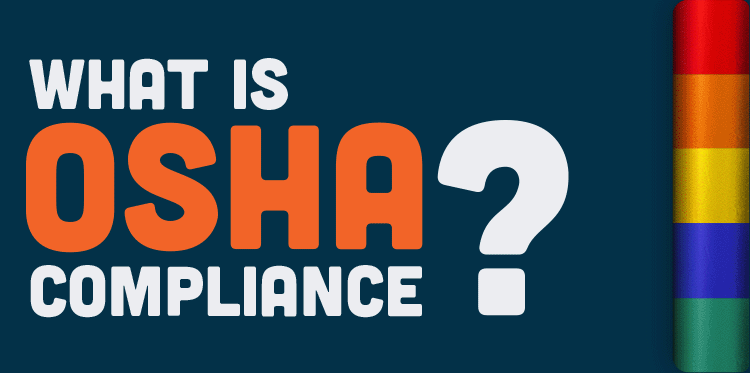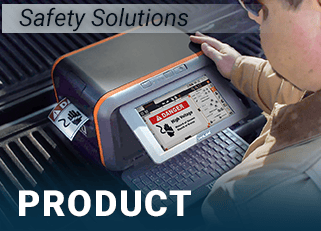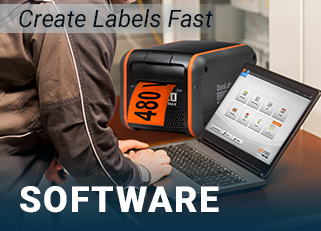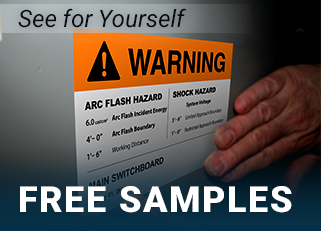OSHA 29 CFR 1910
03
February,
2023
5 MINUTE READ

The Occupational Safety and Health Administration (OSHA) is a branch of the United States Department of Labor and has the responsibility to ensure day-to-day workplace safety for millions of Americans. As a regulatory agency of the federal government, OSHA creates rules that have the weight of law wherever they apply. For most workplaces, the rules that apply are in 29 CFR 1910.
What is OSHA 29 CFR 1910?
For reference and enforcement, the rules created by all federal regulatory agencies are collected into a multi-part document called the Code of Federal Regulations (CFR). Within the CFR, regulations are organized by the governing department and the topic of the rules.
The rules from the Department of Labor, including OSHA's regulations, are found in Title 29 (Labor) of the CFR. The most commonly-encountered OSHA rules are those that apply to the "general industry," or most workplaces in the United States, and these rules appear in Part 1910 of Title 29. This is where that mouthful of letters and numbers comes from: 29 CFR 1910 just means "Title 29 of the CFR, Part 1910." This collection of regulations is often referred to as OSHA's Occupational Safety and Health Standards.
While Part 1910 is the broadest collection of OSHA regulations, OSHA also has different sets of rules that apply to certain industries. Shipyards are covered in Part 1915, for example; construction is in Part 1926, and agriculture is in Part 1928.
What is Covered in 29 CFR 1910?
OSHA's regulations in Part 1910 are divided into 20 subparts:
- Subpart A - General (sections 1910.1-1910.9)
- Subpart B - Adoption and Extension of Established Federal Standards (sections 1910.11-1910.19)
- Subpart D - Walking and Working Surfaces (sections 1910.21-1910.30)
- Subpart E - Exit Routes and Emergency Planning (sections 1910.33-1910.39)
- Subpart F - Powered Platforms, Manlifts, and Vehicle-Mounted Work Platforms (sections 1910.66-1910.68)
- Subpart G - Occupational Health and Environmental Control (sections 1910.94-1910.98)
- Subpart H - Hazardous Materials (sections 1910.101-1910.126)
- Subpart I - Personal Protective Equipment (sections 1910.132-1910.138)
- Subpart J - General Environmental Controls (sections 1910.141-1910.147)
- Subpart K - Medical and First Aid (sections 1910.151-1910.152)
- Subpart L - Fire Protection (sections 1910.155-1910.165)
- Subpart M - Compressed Gas and Compressed Air Equipment (sections 1910.166-1910.169)
- Subpart N - Materials Handling and Storage (sections 1910.176-1910.184)
- Subpart O - Machinery and Machine Guarding (sections 1910.211-1910.219)
- Subpart P - Hand and Portable Powered Tools and Other Hand-Held Equipment (sections 1910.241-1910.244)
- Subpart Q - Welding, Cutting, and Brazing (sections 1910.251-1910.255)
- Subpart R - Special Industries (sections 1910.261-1910.272)
- Subpart S - Electrical (sections 1910.301-1910.399)
- Subpart T - Commercial Diving Operations (sections 1910.401-1910.440)
- Subpart Z - Toxic and Hazardous Substances (sections 1910.1000-1910.1450)
Enforcement of 29 CFR 1910
OSHA enforces its regulations with workplace inspections and citations for failure to comply. However, the agency's workforce can't inspect every workplace, every day; even counting the state-specific partner agencies, OSHA has only about 2,200 inspectors to cover more than 8 million workplaces. The agency's goal is to prevent deaths and injuries on the job, so it prioritizes those workplaces where the most serious injuries are most likely to occur, based on several factors.
In general, OSHA uses the following hierarchy of criteria to set the overall inspection priorities for enforcing its Occupational Safety and Health standards:
- Imminent Danger. OSHA's top inspection priority is any situation in which the agency becomes aware of a hazard that could cause death or serious harm. These hazards do not need to be reported to trigger an inspection. In some cases, an OSHA inspector noticed a serious hazard while driving past a workplace, and that workplace then became a top priority for inspection.
- Fatalities or Catastrophes (hospitalization of three or more workers). These kinds of events must be reported to OSHA within eight hours of the incident. These events will trigger an inspection. While OSHA's initial focus will typically be on finding the cause of the event and ensuring that it does not happen again, these accidents are rare in facilities that have made safety a priority; unrelated citations frequently follow.
- Complaints. When OSHA receives a complaint about unsafe working conditions from an employee, union representative, the media, or some other knowledgeable source, the agency will give a high priority to investigating those complaints. These complaints may be kept confidential, and OSHA has been known to sue employers who unlawfully retaliate against whistleblowers.
- Follow-Up. OSHA will typically return to any workplace that was previously inspected, checking that the necessary actions have been taken to resolve any problems that were found. A repeated violation (one that a facility is cited for more than once in five years) carries a much higher fine.
- Planned Investigations / Programmed Investigations. These are ordinary, scheduled inspections that target high-hazard industries and workplaces.
When planning the inspections for this last category, OSHA uses data about a facility's annual rate of injuries and illnesses to prioritize the facilities most in need of inspection. This is called OSHA's Site-Specific Targeting program. The rates are measured in two ways: the number of worker Days Away, Restricted or Transferred (DART), and the number of worker Days Away From Work due to Illness or Injury (DAFWII). (Both of these rates are part of mandatory reporting.) As an example, the criteria for inclusion in OSHA's Site-Specific Targeting program for 2014 were:
- A DART rate of 7.0 or above, or a DAFWII rate of 5.0 or above, for manufacturing facilities
- A DART rate of 15.0 or above, or a DAFWII rate of 14.0 or above, for non-manufacturing facilities
OSHA Inspections under 29 CFR 1910
How do inspectors go about conducting an OSHA inspection? Generally, they will follow these steps:
- Research. Before beginning the inspection, the OSHA compliance officer will research the inspection history of the workplace and become familiar with the processes and operations taking place in that specific workplace. They will also research the OSHA standards that are most likely to apply to that workplace.
- Arrival. When an OSHA inspector arrives, they will present their identification, which includes an OSHA photo ID and a serial number. There have been instances of people impersonating an OSHA inspector, so verifying the identity of the OSHA inspector is a good idea.
- Opening Conference. The OSHA officer will meet with representatives of the workplace to give the reason for the inspection and its scope. The employer may have a representative accompany the compliance officer during the inspection. A representative for the employees, often a union representative or a foreman, also has the right to accompany the compliance officer.
- The Inspection. The inspection involves walking through the areas of the workplace that the compliance officer stated would be inspected. Also, the compliance officer may look at workplace injury and illness records.
- Exit Conference. When the inspection is complete, the compliance officer will meet with the employer and representatives to discuss what was found, and to present any options for future action. After the inspection, OSHA has six months to issue any citations, establish deadlines for correcting hazards, and propose penalties.
Visual Communication in OSHA's Regulations
Throughout Part 1910, OSHA requires employers to communicate effectively with their employees. When a hazard is present, employees must be made aware of it. Where PPE is needed, employers are responsible for letting their workers know what equipment is required. There are specific communication requirements for specific situations as well, ranging from ladder safety to chemical hazards. Outside compliance experts can provide a clear perspective on safety needs, to make sure nothing is missed.
While initial training for employees is also required in many cases, ongoing communication is often handled with signs and labels. This visual communication can be the most effective and reliable way to provide important safety information. Many OSHA rules specifically require labels and signs for this reason.
Duralabel has offered solutions for workplace visual communication since 1970, and we're proud to provide the DuraLabel line of industrial printers to create custom labels on-site and on-demand. We also offer free resources for training and safety, including a free guide to OSHA-compliant safety signage.
RELATED RESOURCES

What is OSHA Compliance?
Dangerous working conditions nationwide sparked the creation of the Occupational Safety and Health Act (OSH ...
Read
OSHA 1926 Requirements
Because it is a high hazard industry, with unique situations and hazards, and employing more than six million ...
Read
OSHA Rules for Hazardous Chemicals
When dealing with hazardous chemicals, safety is key. However, the steps necessary to keep workers safe will ...
Read.png)


